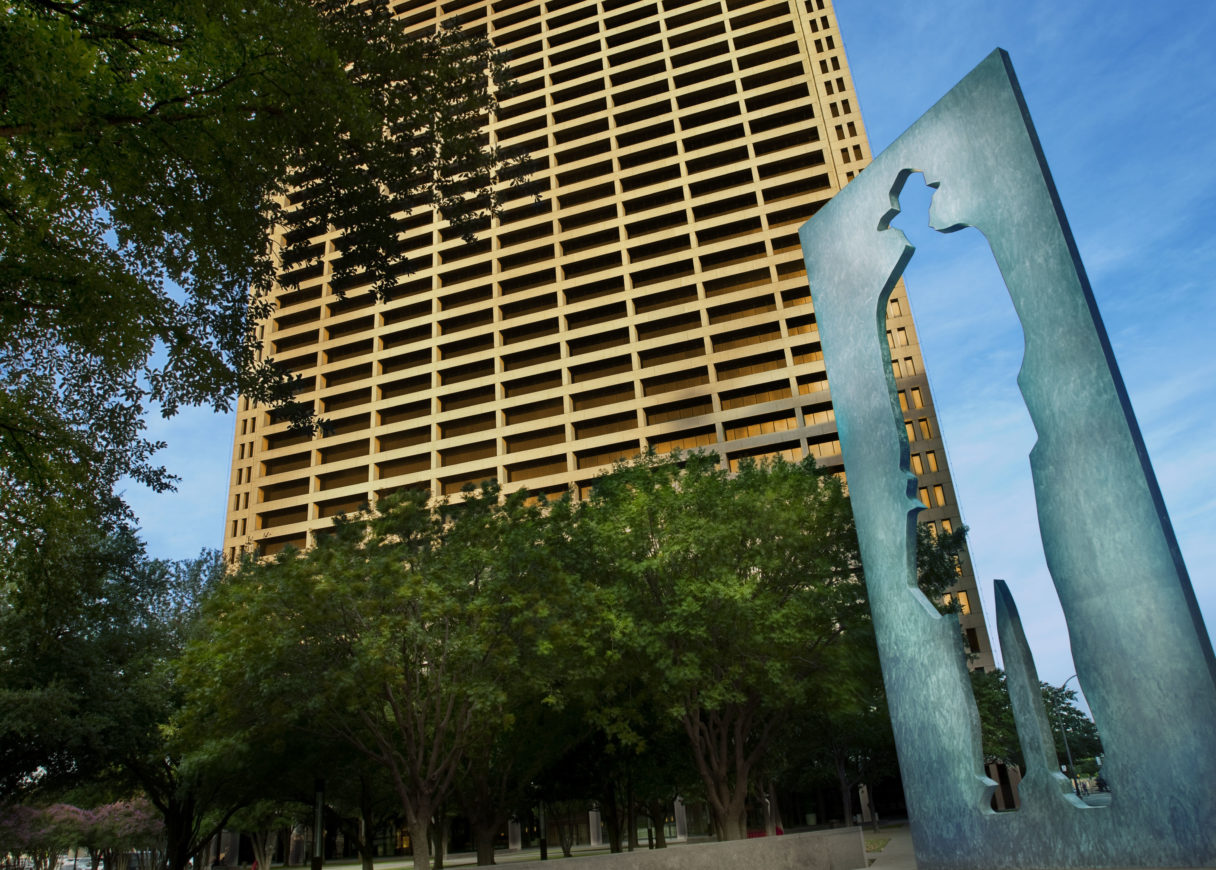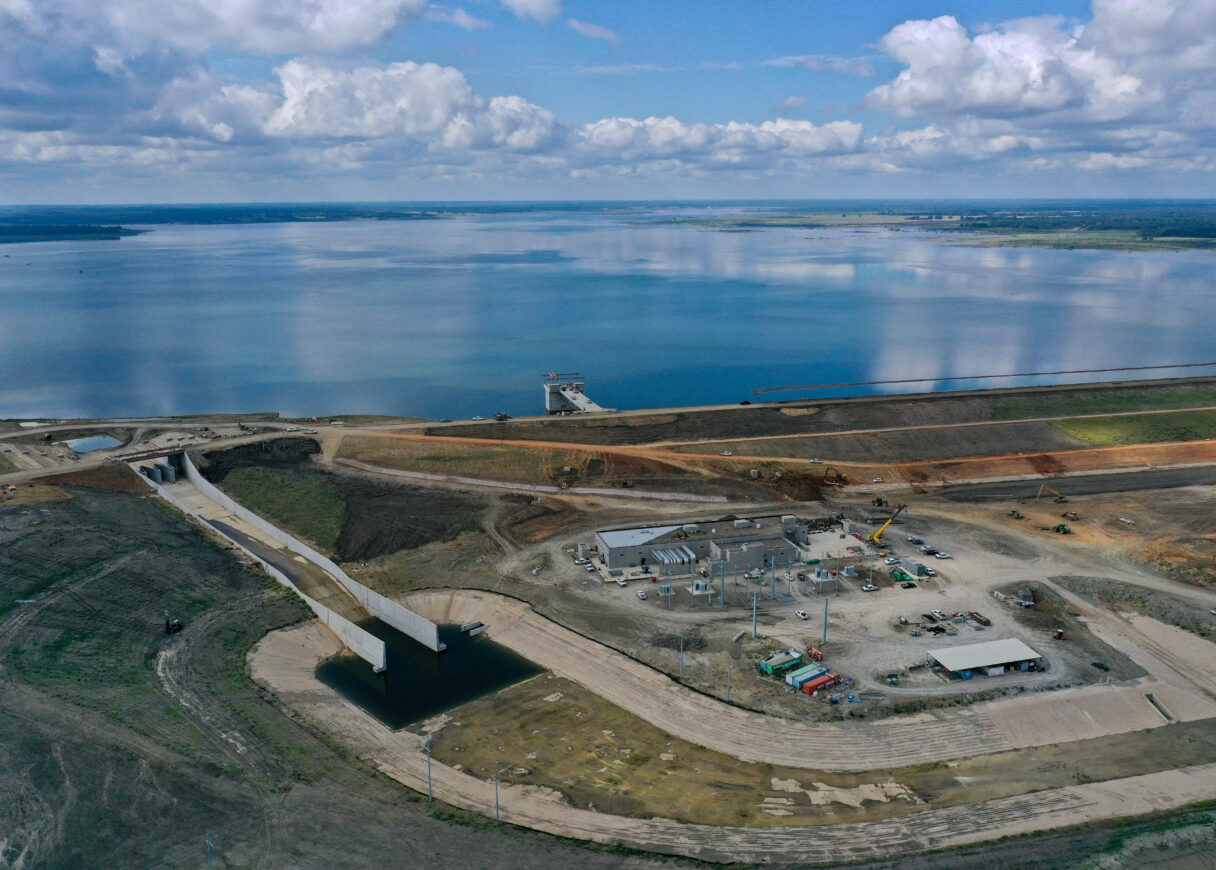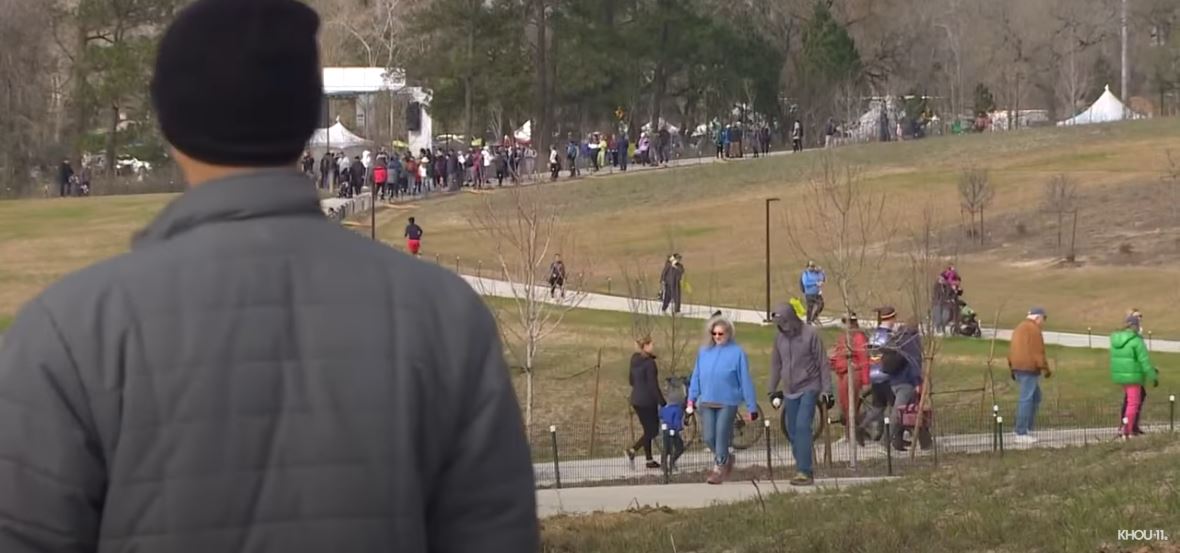The nature of our work as an infrastructure firm allows our commitment to environmental sustainability to influence our client projects as well as our own internal operations.
Building Something Bigger: Sustainability in Client Projects
In nearly every project we touch at Freese and Nichols, we are uniquely positioned to improve resiliency or sustainability for our clients, communities, or the environment. Whether it’s in providing cost-savings for our clients, simple repairs that become community enhancements, or setting paths for future generations to enjoy natural resources, our team can tell many stories of making long-term impacts on our communities.
The projects below represent recent examples of sustainability efforts synthesized across multiple channels – technical, environmental, social, and economic – that came together as some of our most successful and impactful projects for clients.
Bois d’Arc Lake
Bois d’Arc Lake, Texas’ first new reservoir in 30 years, is a critical new water source for the 2 million people served by the North Texas Municipal Water District. The program involved four years of intensive ecological restoration to transform 17,000 acres of ranchland into a thriving expanse of wildlife habitat, with restored wetlands, grasslands, streams and forests. The improvements are still ongoing and will be maintained and monitored for the next 20 years until the habitat reaches its goals.
Sustainable Project Highlights:
- Provides long-term water supply for fast-growing communities
- Transformation of more than 17,000 acres of ecological restoration for streams, wetlands, grasslands, forests and wildlife habitat to offset the lake footprint
- Enhances local economy
- Offers community recreation benefits
Kinder Land Bridge at Memorial Park
At Houston’s Memorial Park, the new Kinder Land Bridge and Cyvia and Melvyn Wolff Prairie give the park’s 4 million annual visitors — not to mention all of its wildlife — a safe and scenic way to access the whole park without walking across a six-lane thoroughfare. As part of the collaborative design team, our stream restoration and stormwater experts designed the 4,000-foot natural channel system and expansive prairie ecosystem, which work together to preserve native habitat, improve stormwater drainage and mitigate flooding.
Sustainable Project Highlights:
- 4,000-foot natural channel system and prairie ecosystem
- Preserves native habitat
- Improves stormwater drainage
- Expands park access for humans and wildlife
Dillard Wetland Restoration
The plan to restore the 27-acre Dillard Wetland, in an area of New Orleans still recovering from Hurricane Katrina, is making neighborhoods safer from flooding and improving community life by developing a welcoming urban retreat that nurtures healthy native vegetation. Using green infrastructure and natural processes, the project aims to reduce flood damage, improve public health and water quality, educate residents about water and the environment, and spur economic activity. The planning process included robust community engagement to gather input, build enthusiasm and develop long-term interest in the project’s benefits and potential.
Sustainable Project Highlights:
- Implements green infrastructure features
- Reduces flood risk
- Reestablishes healthy wetland vegetation
- Spurs economic opportunity
- Provides a retreat from urban life
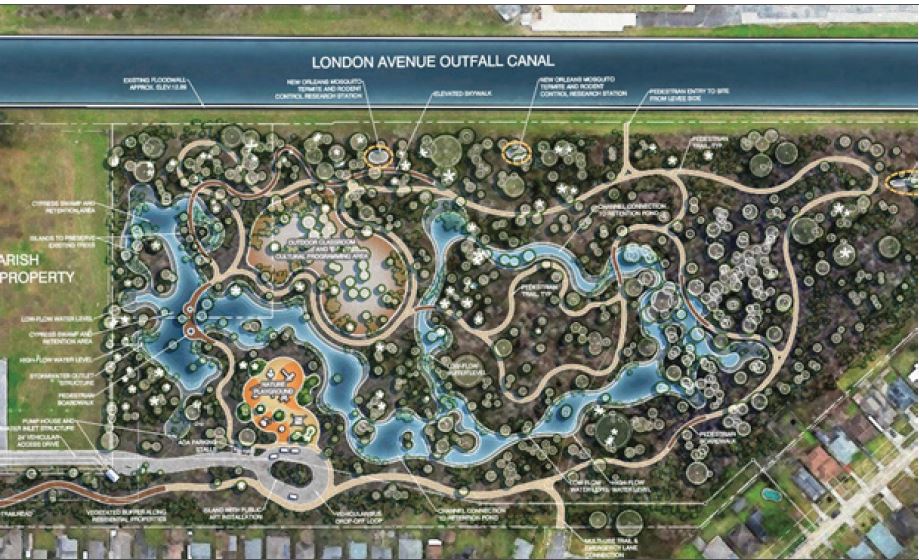
Expanding Sustainable and Resilient Attributes in Active Projects
Freese and Nichols has been providing sustainable, resilient design solutions for infrastructure since our firm was founded in 1894. Although the terminology has evolved over the years, our LEADS value to “Serve Always” has stayed consistent: We are passionate about finding creative, practical solutions, and we strive to make the world a better place.
Sustainability and Resiliency in Active Projects
Firm-wide, our professional and technical staff make efforts to conserve energy and reduce waste for our client projects. At the time of this report’s publication, our project data indicates that more than half of our active projects have planned, designed or implemented energy reduction, waste reduction, water conservation or utilization of recycled materials. Additionally, as our clients react to severe weather events or changes in climate, we see that in 69% of our active projects, we have contributed to climate resiliency/adaptation during planning, design or implementation.
LEED, Envision and Other Sustainability Ratings
At the time of this report’s publication in 2023, 7.4% of our active projects are utilizing Envision, LEED or other sustainability rating systems. We also have 31 staff members who are Envision Sustainability Professionals, and 20 who are LEED accredited. These can be valuable tools for strengthening our teams and projects with additional expertise and resources.
Our Envision accredited staff advise our internal teams and clients on best practices for sustainability, and the re-credentialing requirements helps us keep our knowledge up to date. We will continue to encourage the expansion of our number of accredited professionals and rated projects where it makes the most impact for our clients.
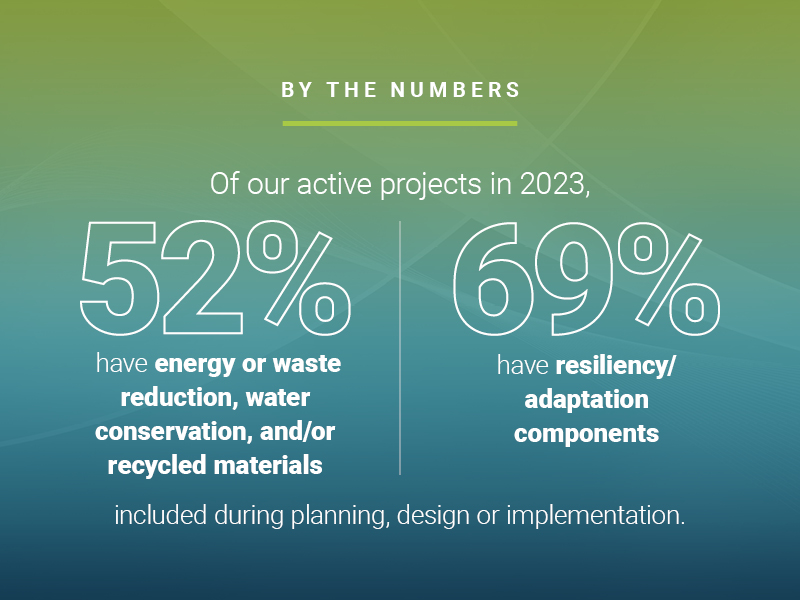
Project Management and Tracking
Our Sustainability Committee’s role has been expanded to include support for Project Managers in tracking sustainability and resiliency measures within our projects. By helping to provide a framework for defining, recording and reporting on our projects’ sustainable elements, we expect to increase our team’s abilities to share knowledge with one another, provide a more consistent perspective on sustainability from Freese and Nichols, and remain at the forefront of these ever-evolving service offerings for our clients.
Recently, with guidance from our Sustainability Committee, our Project Managers have begun using an updated system for tracking sustainability and resiliency in our projects, and we expect to report further on these elements in the future.
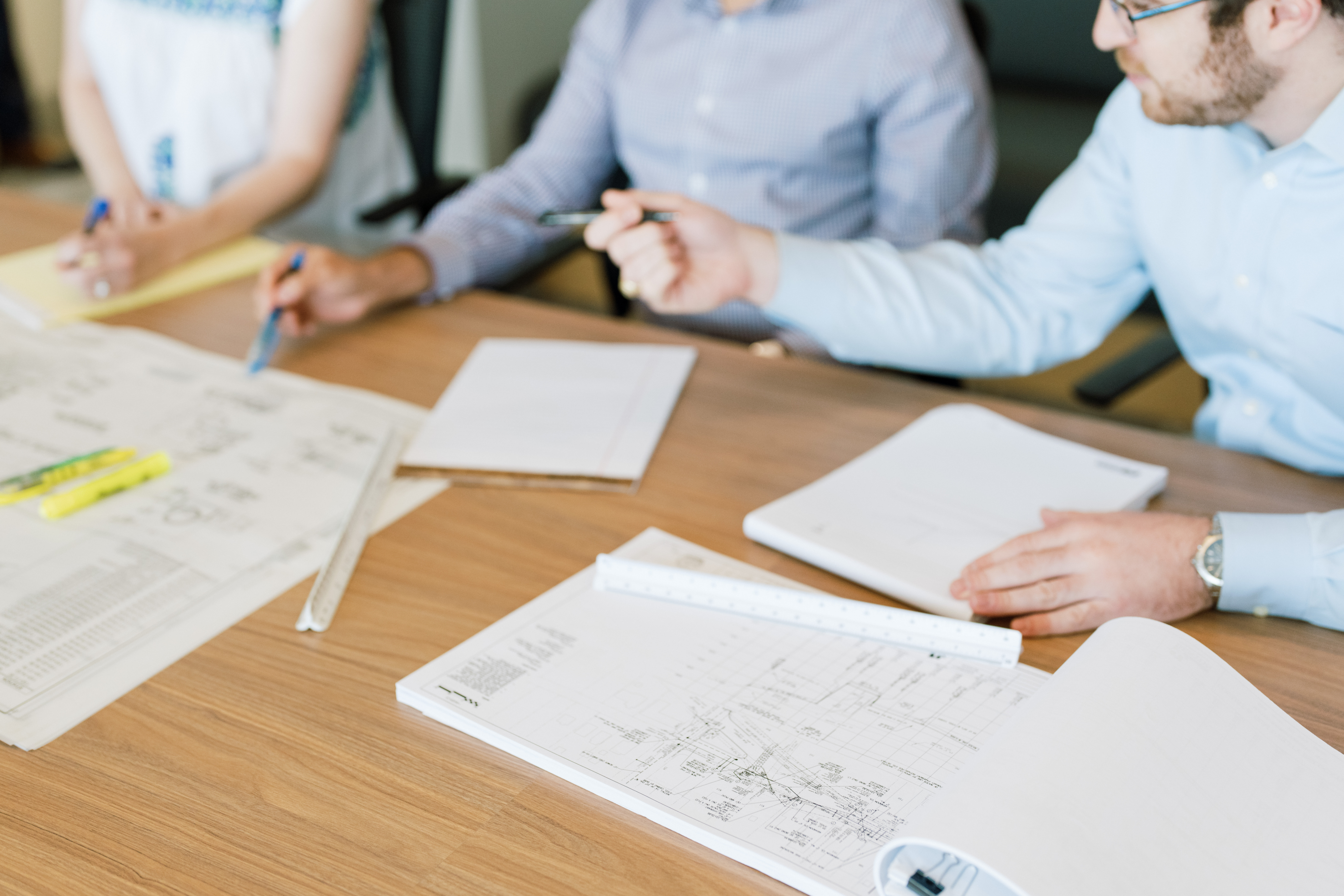
Operational Efficiencies
Our commitment to environmental sustainability shapes the ways we select and operate within our offices. Increasingly, we are finding more energy-efficient and environmentally-friendly ways to do business, and much of those efforts begin with examining our own spaces.
Sustainability in Current Office Spaces
Our Real Estate Services team works to provide office spaces that best meet Freese and Nichols’ needs in a variety of ways, including location, cost, and conveniences for clients and staff. The team works with the Chief Operating Officers and Division Managers to develop plans that include new office openings, expansions, moves, and closings. Sustainable decision-making comes into play for all Real Estate Services’ functions, including site selection, design, construction, furnishings, and relocation of staff.
In recent years, Freese and Nichols has prioritized energy efficiency and conservation within the office spaces where we work each day. With more than 30 offices nationally, we track each of our leased spaces’ opportunities for sustainability such as recycling or composting capabilities; LED lighting; access to public transportation; reusable kitchenware; and LEED Certification. Currently, 64% of our leased space is LEED certified, and excluding our co-working spaces, all of Freese and Nichols’ leased space employs at least one of our tracked sustainable measures. With newly implemented tracking tools and our Sustainability Committee’s expanded involvement, we continue to take steps toward making our real estate operations more sustainable.
Some sustainable practices that Freese and Nichols employs in many of its offices include:
- Providing reusable plates, silverware, and drinkware
- Providing biodegradable plates, silverware, and drinkware
- K-Cup recycling
- Specialty pool vehicles
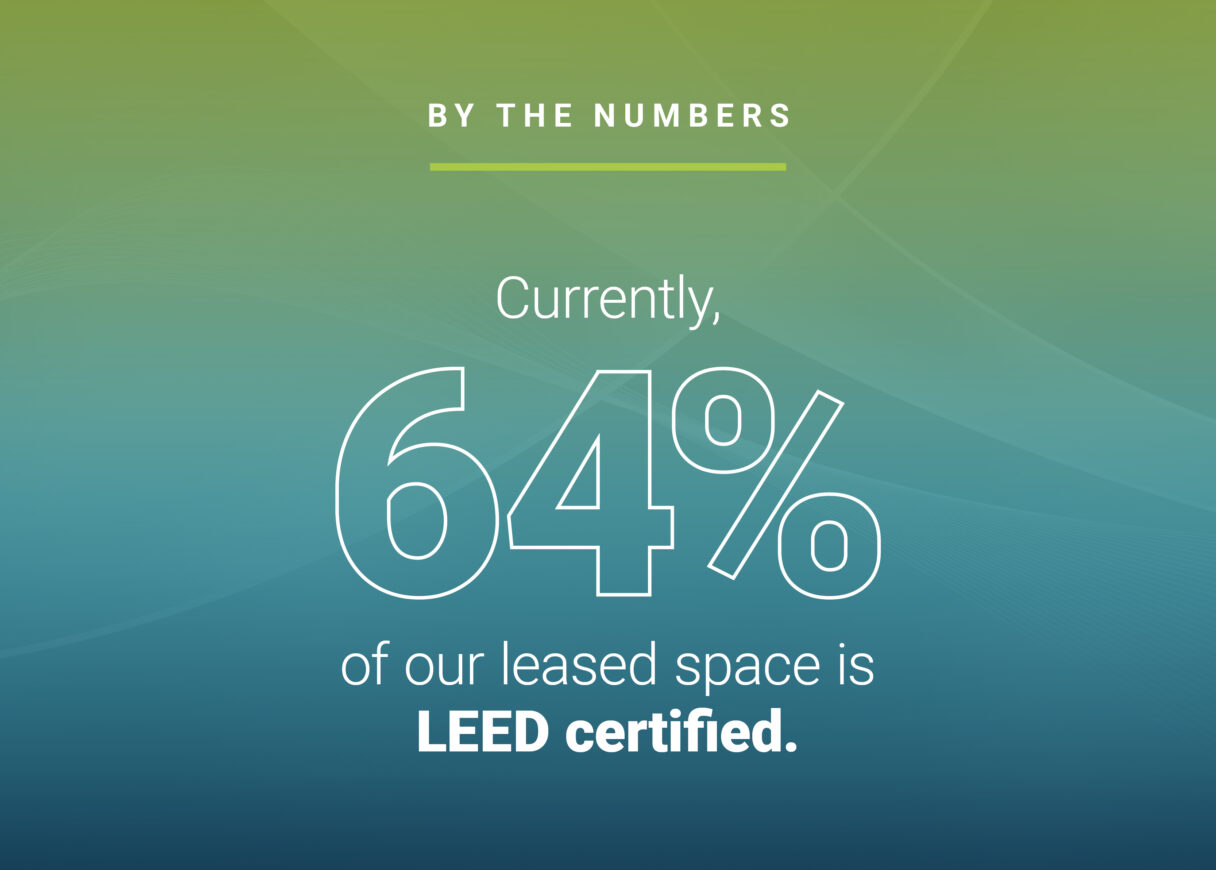
Sustainability in Selecting New Office Spaces
As our firm continues to grow, the spaces we occupy also become greater factors in how we operate sustainably. We have developed a framework of important sustainable elements that inform our decisions for selecting new office space, and we continue to develop how that framework is implemented.
Chief Operating Officers and Division Managers develop growth plans that are presented to the Executive Team and Board of Directors. Approved plans are incorporated into the 5-year Real Estate Plan, which is used to develop capital and expense budgets that fund office changes.
Some of the factors we take into consideration when selecting a new space include:
- LED lighting
- Recycling
- Composting
- Public transportation access
- Building LEED certification
